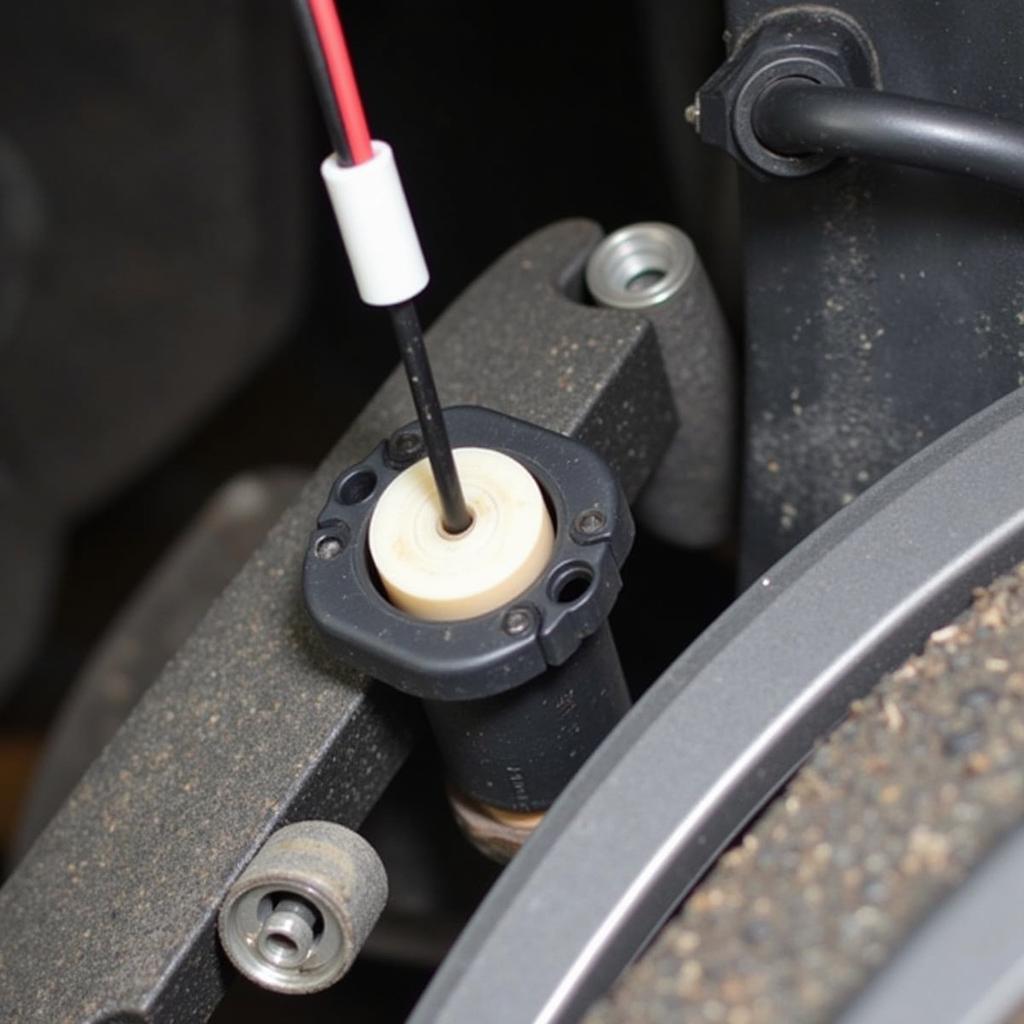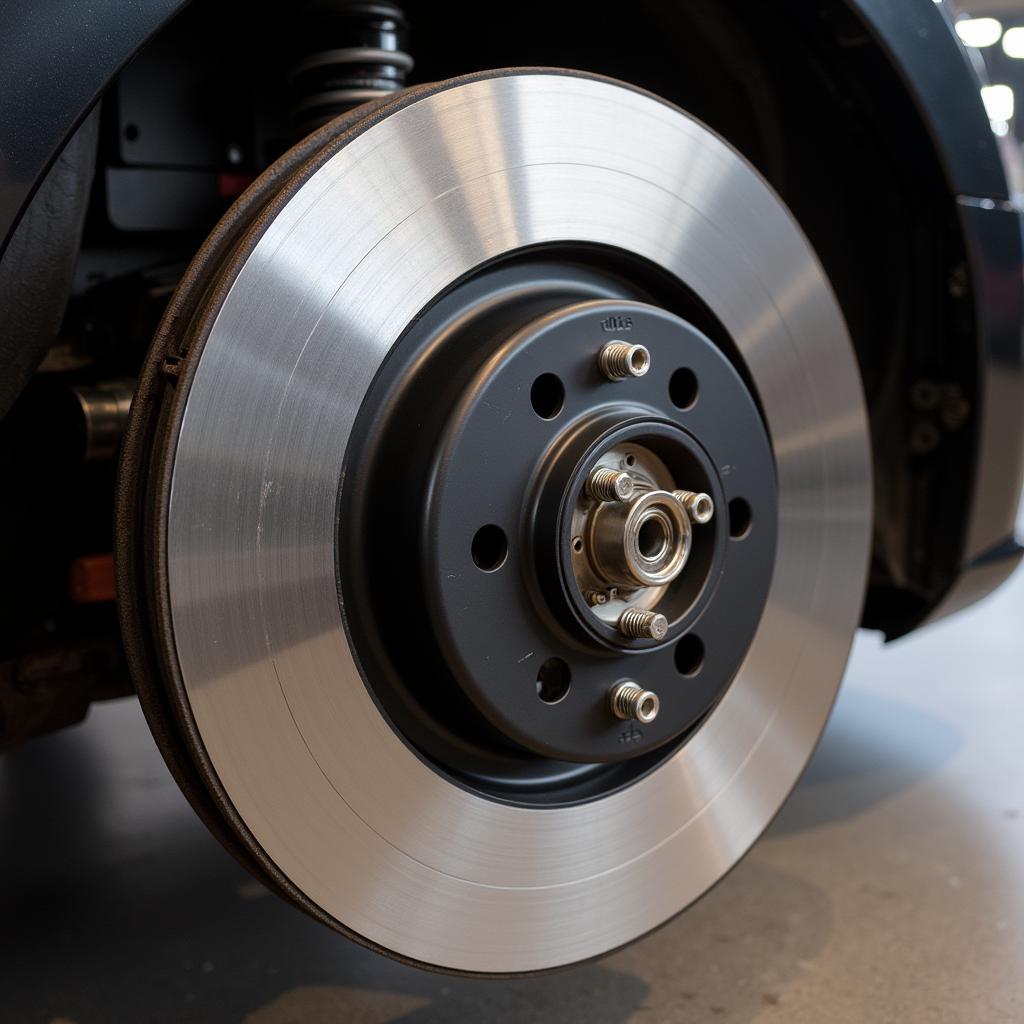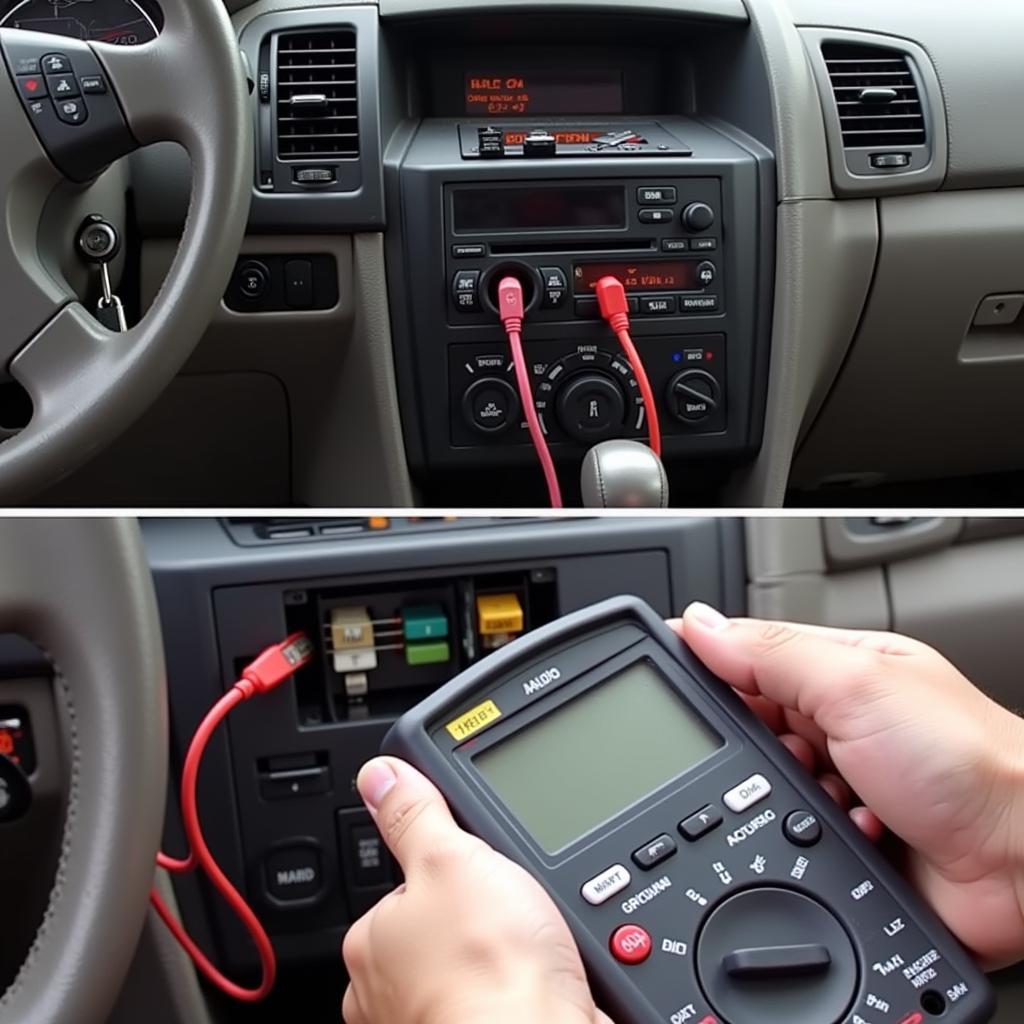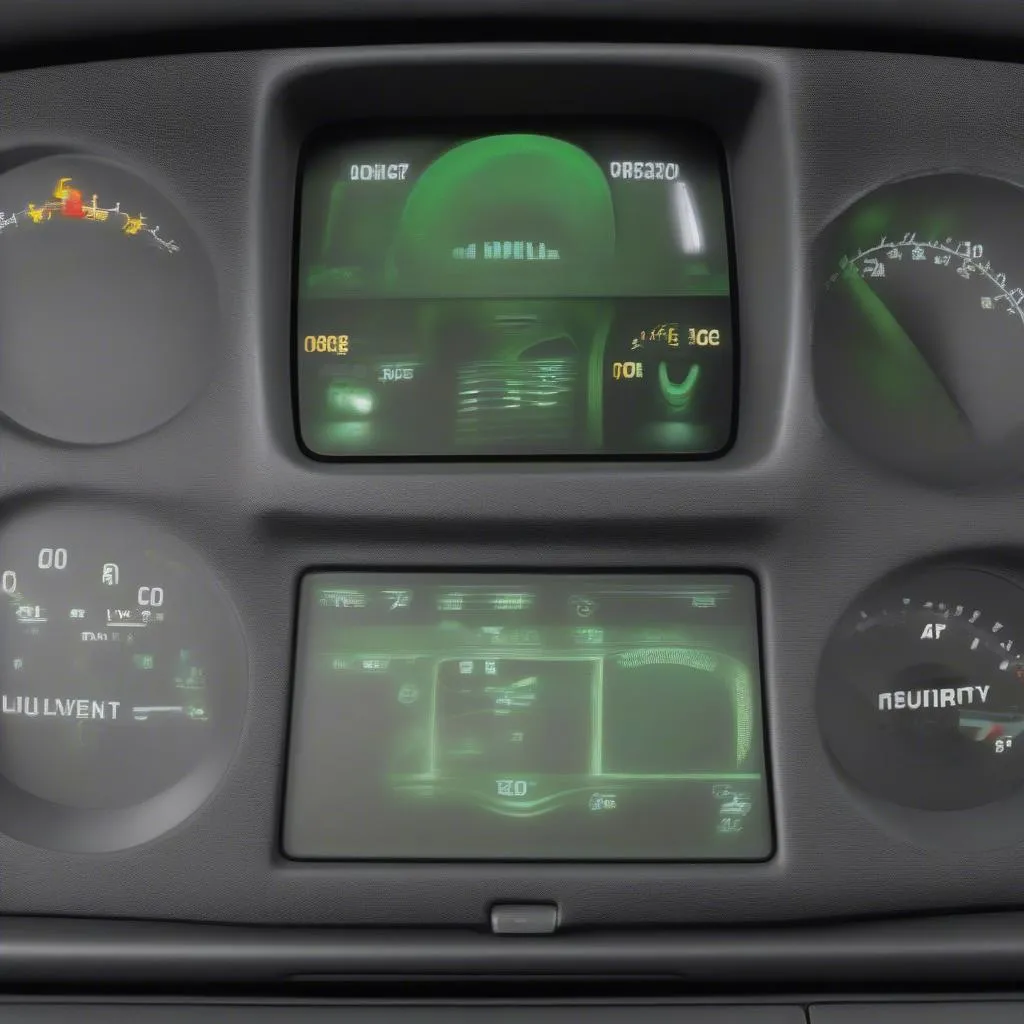The dreaded audi a5 brake pads warning light can be a source of anxiety for any driver. This illuminating symbol on your dashboard signifies potential issues with your braking system, demanding immediate attention. Whether it’s a simple fix or a more complex problem, understanding the causes and solutions can save you time, money, and potential hazards on the road.
If you’re seeing the Mazda brake warning, check out our comprehensive guide. It could indicate a range of issues, from worn brake pads to more serious problems with the braking system.
Understanding Your Audi A5 Brake System
Your Audi A5’s braking system is a complex network of components working together to ensure safe and efficient stopping power. The brake pads, crucial for generating friction against the rotors, are designed to wear down over time. The warning light is your car’s way of telling you they need replacing. However, the warning light can also indicate other issues, such as low brake fluid, a faulty sensor, or problems with the ABS (Anti-lock Braking System).
Common Causes of the Brake Pad Warning Light
- Worn Brake Pads: This is the most common reason for the warning light. Brake pads have wear indicators, small metal tabs that contact the rotor when the pads are too thin, triggering the warning light.
- Low Brake Fluid: Low brake fluid can indicate a leak in the system, which compromises braking performance. The warning light will often illuminate in conjunction with a low brake fluid level.
- Faulty Brake Pad Wear Sensor: The sensor itself can malfunction, triggering the light even if the brake pads are still good.
- ABS Issues: Problems with the Anti-lock Braking System can also trigger the warning light. This could be due to a faulty sensor, control module, or other components within the ABS.
 Audi A5 Brake Pad Wear Sensor Closeup
Audi A5 Brake Pad Wear Sensor Closeup
Diagnosing the Problem
When the audi a5 brake pads warning light appears, it’s crucial to diagnose the issue promptly. Start by checking your brake fluid level. If it’s low, top it off and monitor it closely for further drops, which could indicate a leak. Next, visually inspect your brake pads. If they appear thin or you can see the metal wear indicators, they need replacement.
If you’re experiencing issues with your Mazda CX-5’s electronic parking brake, you can find helpful information in our articles about the Mazda CX-5 electronic parking brake warning light and electric parking brake warning light Mazda CX-5.
Checking Brake Pad Thickness
To accurately check brake pad thickness, you’ll need to remove the wheel and caliper. A general rule of thumb is that brake pads should be replaced when they reach a thickness of about 3mm. Consult your owner’s manual or a qualified mechanic for specific recommendations for your Audi A5 model.
Solutions and Repairs
Depending on the diagnosed issue, the solution can range from a simple DIY task to a more complex repair requiring professional assistance.
- Replacing Brake Pads: Replacing brake pads is a relatively straightforward process for those with some mechanical aptitude. However, it’s essential to follow proper procedures and use the correct tools.
- Addressing Brake Fluid Leaks: Locating and repairing brake fluid leaks requires specialized knowledge and tools. It’s recommended to consult a qualified mechanic for this type of repair.
- Replacing a Faulty Sensor: Replacing a faulty brake pad wear sensor or ABS sensor is generally a straightforward process, but may require diagnostic tools to confirm the faulty sensor.
- Repairing ABS Issues: Repairing more complex ABS issues necessitates professional expertise and diagnostic equipment.
You might find relevant information about similar issues in other Mazda models in our article on the electric parking brake warning light Mazda.
DIY vs. Professional Repair
While some brake-related repairs can be handled by DIY enthusiasts, others require professional expertise. If you’re unsure about any aspect of the repair process, it’s always best to consult a qualified mechanic. This ensures the job is done correctly and your Audi A5’s braking system functions safely and efficiently.
 New Audi A5 Brake Pads Installed
New Audi A5 Brake Pads Installed
Conclusion
The audi a5 brake pads warning light shouldn’t be ignored. Addressing the underlying issue promptly is crucial for maintaining your safety and preventing further damage to your braking system. While some fixes can be handled with DIY skills, complex repairs should be entrusted to qualified professionals. Regular maintenance and timely attention to warning lights are essential for keeping your Audi A5 in optimal condition and ensuring a safe driving experience.
FAQ
-
How often should I check my brake pads? It’s a good practice to visually inspect your brake pads every few months, or more frequently if you drive in harsh conditions.
-
Can I drive with the brake pad warning light on? While you might be able to drive a short distance, it’s highly discouraged. Driving with worn brake pads can damage your rotors and compromise braking performance, putting you and others at risk.
-
How much does it cost to replace brake pads on an Audi A5? The cost can vary depending on the specific model, labor rates, and the type of brake pads used. Consult a local mechanic for an accurate estimate.
-
What are the symptoms of worn brake pads besides the warning light? Other symptoms include squeaking or grinding noises, vibrations in the brake pedal, and a longer stopping distance.
-
Can I replace just one brake pad? It’s recommended to replace brake pads in axle pairs (both front or both rear) to maintain even braking performance.
-
How can I prevent premature brake pad wear? Avoid hard braking whenever possible, and ensure your brake calipers are functioning correctly.
-
What is the difference between brake pads and brake shoes? Brake pads are used on disc brakes, while brake shoes are used on drum brakes. Most modern cars, including the Audi A5, use disc brakes on all four wheels. For information regarding issues with the parking brake on a Mazda CX-5, refer to our article on the Mazda CX 5 parking brake warning light.


